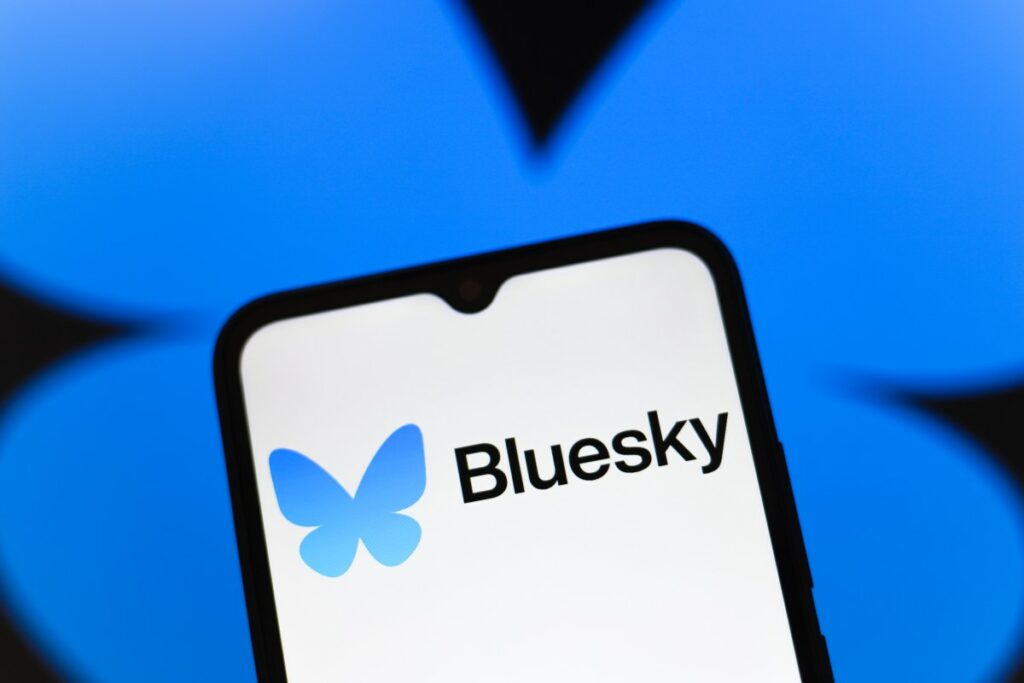Bluesky is missing an opportunity to explain to people that its network is more than just its own Bluesky social app.
In recent weeks, a number of headlines and posts have surfaced questioning whether Bluesky’s growth is declining, if the network has become too much of a left-leaning echo chamber, or if its users lack a sense of humor, among other charges.
Investor Mark Cuban, who even financially backed Skylight, a video app built on Bluesky’s underlying protocol, AT Proto, complained this week that replies on Bluesky have become too hateful.
“Engagement went from great convos on many topics, to agree with me or you are a nazi fascist,” he wrote in a post on Bluesky. That, he said, is “forcing” people to return to X.
Naturally, X owner Elon Musk and CEO Linda Yaccarino have capitalized on this unrest, with the former posting that Bluesky is a “bunch of super judgy hall monitors” and the latter proclaiming that X is the “true” global town square.
The debate around this topic is not surprising.
Without a more direct push to showcase the wider network of apps built on the open protocol that Bluesky’s team spearheaded, it was only a matter of time before the Bluesky brand became pigeon-holed as the liberal and leftist alternative to X.
That characterization of Bluesky, however, is not a complete picture of what the company has been building — but it could become a stumbling block toward its further growth if not corrected.
It’s true that many of Bluesky’s initial users are those who abandoned X because they were unhappy with its new ownership under Musk and its accompanying right-wing shift. After the November elections in the U.S., Bluesky’s adoption soared as X users fled the platform headed by Trump’s biggest individual backer. At the time, Bluesky was adding millions of users in rapid succession, climbing from north of 9 million users in September to nearly 15 million by mid-November and then 20 million just days later.
That growth continued in the months that followed, as top Democrats like Barack Obama and Hillary Clinton joined the app. Today, Bluesky has more than 36.5 million registered users, its public data indicates.
It follows, then, that users’ conversations around news and politics on Bluesky would help to define the network’s tone as they became the dominant voices. Of course, that can spell trouble for any social network, as partisan apps on both the left, like Telepath, and right, like Parler, have failed to successfully challenge X.
Bluesky is more than its app
What’s missing in this current narrative is the fact that Bluesky’s social app is only meant to be one example of what’s possible within the wider AT Proto ecosystem. If you don’t like the tone of the topics trending on Bluesky, you can switch to other apps, change your default feeds, or even build your own social platform using the technology.

Already, people are using the protocol that powers Bluesky to build social experiences for specific groups — like Blacksky is doing for the Black online community or like Gander Social is doing for social media users in Canada.
There are also feed builders like Graze and those in Surf that let you create custom feeds where you can focus on specific content you care about — like video games or baseball — and exclude others, like politics.
Built into Bluesky (and other third-party clients) are tools that let you pick your default feed and add others that interest you from a range of topics. If you want to follow a feed devoted to your favorite TV show or animal, for instance, you can.
In other words, Bluesky is meant to be what you make it, and its content can be consumed in whatever format you prefer best.
In addition to Bluesky itself, the wider network of apps built on the AT Protocol includes photo- and video-sharing apps, livestreaming tools, communication apps, blogging apps, music apps, movie and TV recommendation apps, and more.

Other tools also let you combine feeds from Bluesky with other social networks.
Openvibe, for instance, can mix together feeds from social networks like Threads, Bluesky, Mastodon, and Nostr. Apps like Surf and Tapestry offer ways to track posts on open social platforms as well as those published with other open protocols like RSS. This lets the apps pull in content from blogs, news sites, YouTube, and podcasts.
The team at Bluesky may not be the ones directly building these other social experiences and tools, but highlighting and promoting the existence of this wider, connected social network benefits Bluesky’s brand.
It shows that not only is Bluesky more than just a Twitter/X alternative, it’s just one app in a wider social ecosystem built on open technology — and that’s bigger than just building another X.


